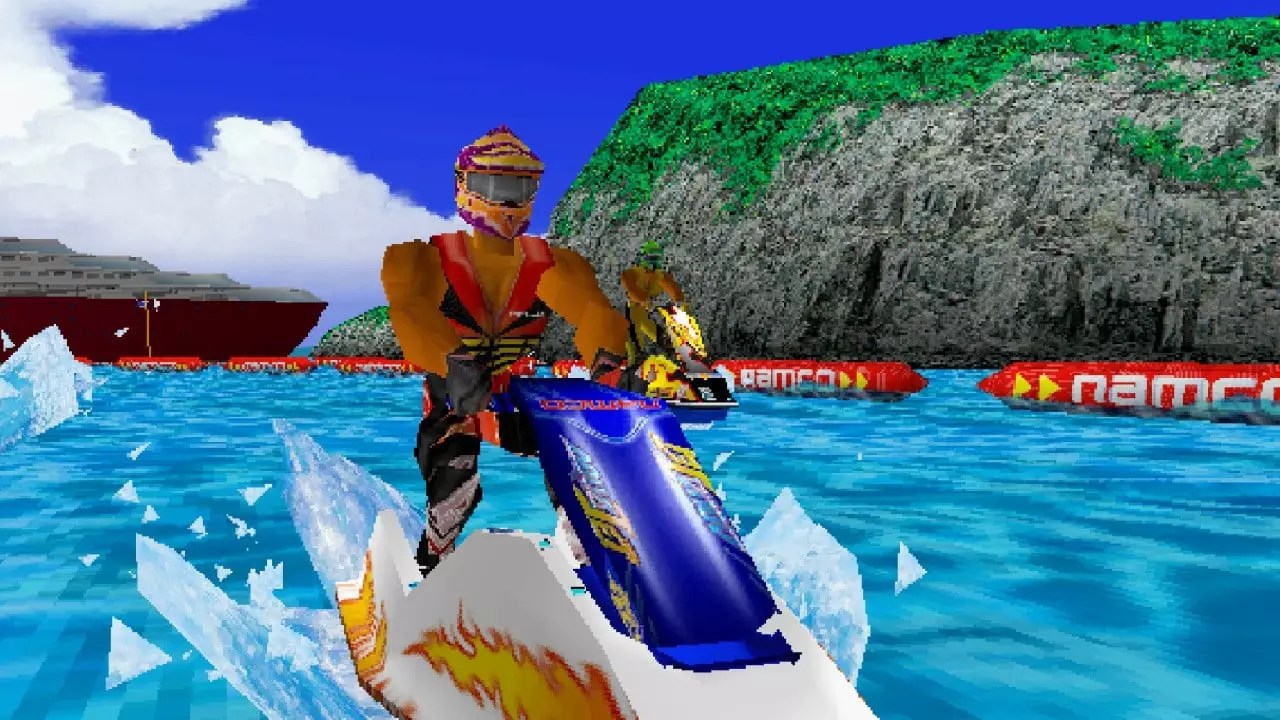The resurgence of retro arcade titles has become a welcome trend for gaming enthusiasts craving simplicity and nostalgia. Aqua Jet, a once-popular watercraft racing game from the 1990s, exemplifies this movement. By bringing a beloved yet modestly contented classic to modern hardware like Switch 2, developers aim to bridge generations. Their efforts demonstrate a genuine respect for the original’s spirit—high-speed, water-splashed racing amid lively environments—yet they inevitably stumble in translating the full experience into a modern context saturated with expectations of depth and variety.
This release, curated by Hamster Corporation, reflects a meticulous appreciation of the source material. The game’s graphics retain their vibrant charm, and its gameplay offers a nostalgic rush of speed and splash. The inclusion of HD rumble and gyroscopic controls signifies an effort to upgrade the tactile feel, making the experience more immersive. However, the core gameplay remains anchored in a minimalist framework: two tracks, limited modes, and a few unlockables. While this simplicity may appeal to purists, it reveals the game’s fundamental inability to sustain prolonged engagement, especially when contrasted against contemporary racing titles that emphasize expansive content and multiplayer experiences.
Limited Content Undermines Longevity
One of the game’s most glaring shortcomings lies in its sparse content. Starting players off with just two tracks—one of which functions as an extension of the other—limits exploration and variety. Additional modes like High Score and Time Attack inject some replayability, yet they do little to compensate for the absence of multiplayer modes or a broader track selection. The ‘Caravan’ mode scratches the surface of challenge but ultimately feels like a filler rather than a core experience.
This limited offering exposes a critical flaw: the game’s inability to evolve beyond its initial design. Unlocking new variants, such as mirror modes or whimsical versions like the penguin track, adds novelty but remains superficial when the core challenge is essentially the same. It’s a reminder that, despite technological enhancements, a game’s true longevity depends on substantial content and sustained engagement avenues—areas where Aqua Jet falls short. The online leaderboard feature provides a competitive outlet, but without multiplayer, it feels more like an afterthought than a core feature.
Technological Upgrades Fail to Compensate
While the Switch 2 port benefits from aesthetic improvements—widescreen options, sharp display modes, and more precise controls—the gameplay itself remains unchanged. The graphics inherently evoke a nostalgic charm, leveraging bright colors and fluid animations that pop whether in docked or handheld modes. These are undeniably strengths; yet, they serve as superficial enhancements when the gameplay mechanics themselves are limited.
Notably, the game’s physics and level design remain simple, relying on jumps, turns, and brief underwater glimpses of marine fauna. The sense of speed is impressive and maintained across modes, but the thrill diminishes quickly when there’s little variation in gameplay structure. The potential of gyroscopic controls and rumble feedback is underutilized, highlighting how technological upgrades cannot substitute for meaningful game design improvements.
A Niche Experience With Limited Appeal
Aqua Jet’s niche appeal is undeniable. It caters primarily to aficionados of ’90s arcade racing or dedicated fans of the original cabinet. For newcomers or casual gamers, it’s unlikely that the game’s limited content and repetitive nature will hold their interest beyond a few sessions. It’s a period piece, a snapshot of an era where simplicity and speed reigned supreme, but it falls short as a comprehensive and engaging experience in today’s gaming landscape.
The inclusion of unlockables and cheat features offers some fun for dedicated players who want to stretch the game’s lifespan, but these can’t mask the fundamental reality: Aqua Jet remains a short, visually appealing, but ultimately lightweight racing diversion. Without multiplayer or a broader array of courses, it becomes a fleeting nostalgia trip rather than a compelling contender for ongoing entertainment.
An Appreciation With Caveats
In evaluating Aqua Jet on Switch 2, one must appreciate the developer’s effort to preserve and honor a vintage gem. The game excels visually and physically, adding small but meaningful controls enhancements. Yet, these improvements only highlight how little content exists beneath the surface. The port feels like a well-polished relic—beautiful and charming but ultimately limited in scope.
For die-hard fans of classic arcade games, Aqua Jet can serve as a charming toy—something to dip into casually. But for the broader gaming community seeking depth, variety, and multiplayer fun, it’s likely to disappoint. The game’s true power lies in its nostalgia, a reminder of a simpler, more carefree era of racing games. Still, in an age where content depth is king, Aqua Jet’s minimal offerings reveal the challenge of modernizing classic titles: capturing their essence isn’t enough if they can’t adapt to contemporary expectations.


Leave a Reply